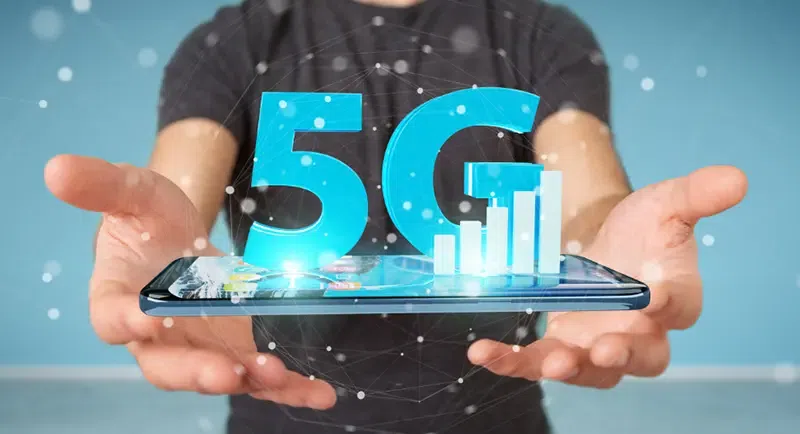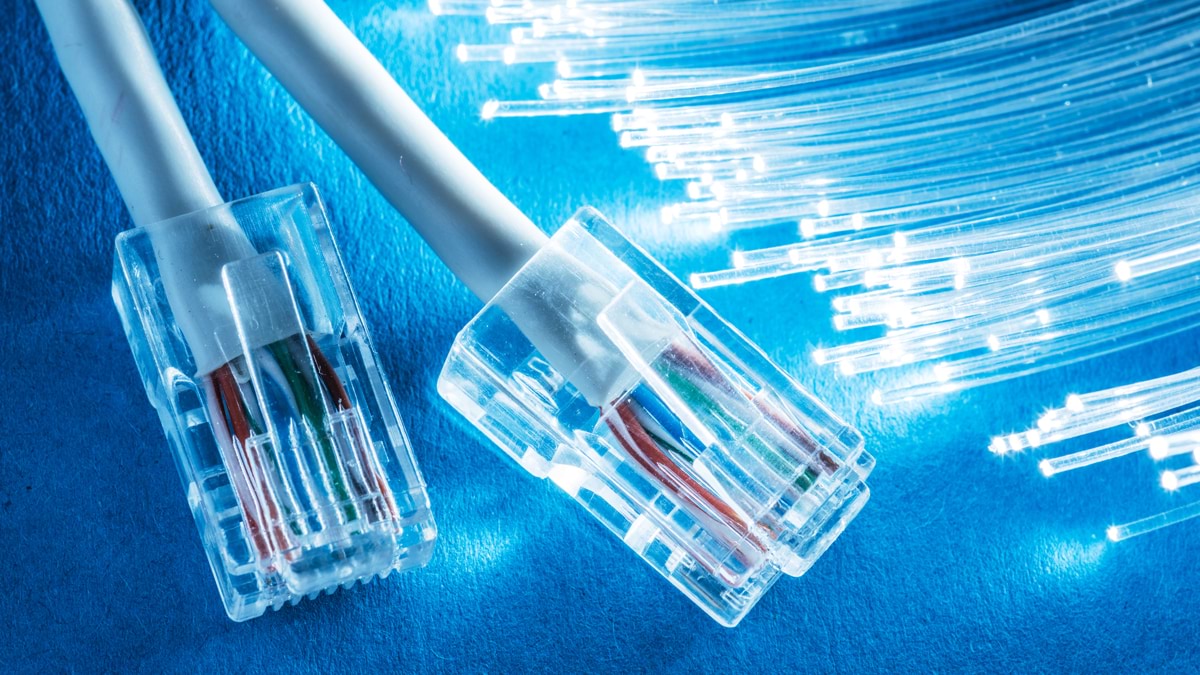Highlights:
- 5G vs. Fiber Optic: An Introduction
- What is 5G Wireless?
- What does Fibre Optics promise?
- 5G vs. Fiber Optic Based on Speed & Performance
- 5G vs. Fiber Optic Based on Reliability and Consistency
- 5G vs. Fiber Optic Based on Availability and Accessibility
- 5G vs. Fiber Optic Based on Cost Considerations
- Conclusion
- Tabular Comparison
Introduction:
The competition is on to provide the quickest, most dependable home internet, and two front-runners have emerged namely 5G wireless and fiber optic broadband.
As these technologies improve and increase their reach, users are faced with a critical decision: which one is best for their home internet needs?
Here we are lending you a helping hand to get your ultimate winner and reasons why to stick by it for a longer run.
5G Wireless

5G home internet is a new form of internet service that connects houses to the internet via 5G wireless technology.
It transmits data from your house to a neighboring cell tower using radio waves. A 5G home internet kit consists of a modem or router that connects to a 5G network and transmits a Wi-Fi signal.
You may use this to connect devices to the network, such as PCs, cellphones and smart TVs. Its benefits include quicker download and upload speeds, availability in locations without cable or fiber, and ease of installation.
However, it has limits, like coverage, dependability and expense.
Also Read on the recently available economical and 5G compatible devices here: https://www.mymobileindia.com/tecno-spark-30-5g-spotted-on-fcc-website/
Fiber Optic Broadband

Fiber optic broadband is a high-speed internet connection that transmits data in the form of light pulses through tiny strands of glass or plastic.
It provides quicker and more dependable internet than traditional copper-based connections, such as DSL or cable.
The technique works by connecting wires directly to the residence and transmitting data via light pulses at high rates. An optical network terminal (ONT) transforms these impulses into electrical signals that are sent to devices.
The benefits include extraordinary speed, low latency, dependability, large capacity, and future-proof capabilities. Downsides include possible expert installation charges and restricted availability. Despite this, fiber optic broadband is considered the gold standard for home internet.
Comparison based on Speed & Performance
Fiber optic internet provides improved speed and performance, with download rates of up to 10 gigabits per second (Gbps), making it perfect for data-intensive activities, such as 4K video streaming, cloud backups, online gaming, and videoconferencing.
Current 5G networks offer download rates of roughly 1 Gbps, but future advances might enhance them much more. For households with heavy internet users or data hogs, the extra speed of fiber can make a significant difference.
Comparison based on Reliability & Consistency
Since fiber optic internet connects to houses directly through physical cables, it is less vulnerable to outages caused by inclement weather or network congestion, and so offers superior dependability and service consistency.
However, 5G, a wireless technology, may encounter sporadic connection challenges in regions with weak tower coverage or barriers.
Despite their growth, 5G networks remain strong and their resilience is especially beneficial for mission-critical applications or users who demand constant connectivity.
Comparison based on Availability & Accessibility
5G is becoming more popular as telecommunications firms swiftly construct networks around the country, with ambitions for countrywide coverage in the coming years. Fiber optic networks are more expensive and time-consuming to establish, which limits their availability, particularly in rural and suburban regions.
5G is sometimes the only high-speed internet alternative available in local areas and its speedier installation and activation than fiber lines makes it a significant selling factor.
Comparison based on Cost Considerations
Fiber optic internet is typically more expensive than 5G owing to increased infrastructure expenditures. 5G networks are less expensive to create, enabling carriers to offer more reasonable plans, particularly for basic high-speed internet.
Fiber optic plans are normally more expensive, but faster speeds may make the investment worthwhile for some customers. 5G services frequently have data limitations, but fiber subscriptions give unlimited bandwidth, making fiber more desirable to heavy internet users.
Conclusion
5G and fiber optic internet are major improvements over regular broadband, however the choice is frequently based on speed/reliability and availability/cost.
Fiber optics provide superior performance and consistency, making it a wise long-term investment. However, 5G’s greater availability and cheaper entry cost may be more viable.
As these technologies grow, the distinctions may become less noticeable, so examine your unique internet demands, budget, and local market possibilities to find the best fit for your house.
Tabular Comparison
| Feature | 5G Home Internet | Fiber Optic Internet |
| Technology | Wireless (radio waves) | Wired (light pulses) |
| Speed | Up to several Gbps (varies by location) | Up to 1 Gbps or higher (symmetrical speeds) |
| Latency | Higher latency (slower response times) | Lower latency (faster response times) |
| Reliability | Can be affected by weather, congestion, and distance | Highly reliable, unaffected by weather or congestion |
| Availability | Widely available, but speeds vary | Less widely available, but often offers higher speeds |
| Cost | Generally more affordable | Can be more expensive, but often includes better value plans |
| Installation | Easy and quick | Requires professional installation |
| Data Caps | Often has data caps | Typically no data caps |
Conclusion:
Fiber optic internet is chosen by intensive users, such as online gamers and video streamers because of its speed, dependability, and latency. However, its availability is restricted in many locations.
5G home internet is both economical and convenient, making it ideal for basic online tasks like surfing and streaming video.
It may not be suitable for frequent data users or those who want constant fast speeds. The ideal decision is determined by your unique requirements, budget, and local availability.
FAQs
What are the key differences between 5G and fiber optic home internet?
Fiber optic internet provides higher download rates of up to 10 Gbps, is more stable owing to fewer interference and outages, is implemented more quickly, and has broader coverage, particularly in rural and suburban areas, as opposed to restricted fiber optic availability. Furthermore, because of the reduced cost of construction, 5G internet services are typically less expensive than equivalent fiber optic bundles.
Which one offers faster speeds?
Fiber optic internet is the clear winner when it comes to raw speed. Fiber networks can deliver download speeds up to 10 Gbps, while current 5G networks max out around 1 Gbps. This makes fiber better suited for data-heavy applications like 4K streaming, cloud backups, and online gaming.
Is 5G or fiber optic more reliable?
Fiber optic internet is generally more reliable than 5G. Since fiber networks are built on physical cables running directly to homes, they are less susceptible to disruptions from weather, network congestion, or other interference that can impact wireless 5G signals.
Which one has better availability?
5G has a significant advantage in terms of availability and accessibility. Telecom providers are rapidly deploying 5G networks across the country, with plans for nationwide coverage in the next few years. Fiber optic networks are much more expensive and time-consuming to install, so availability is more limited, especially in rural and suburban areas.
Is 5G or fiber optic more affordable?
5G internet plans are typically more affordable than comparable fiber optic packages. The lower infrastructure costs for 5G allow providers to offer more budget-friendly plans, especially for basic high-speed internet. Fiber optic tends to be more expensive, though the higher speeds may justify the cost for some users.
Which one should I choose for my home internet?
The best choice depends on your specific needs and what’s available in your local market. If you have access to both 5G and fiber, the slightly faster speeds and reliability of fiber may make it the better long-term investment. But if 5G is the only high-speed option in your area, or if you’re more cost-conscious, then 5G can still be a great choice. Be sure to compare plans and providers in your region to find the right fit.
Read More : Top 10 Smart Home Devices to Upgrade Your Living Space in 2024
Read More: Tecno Spark 30 5G Spotted On FCC Website
